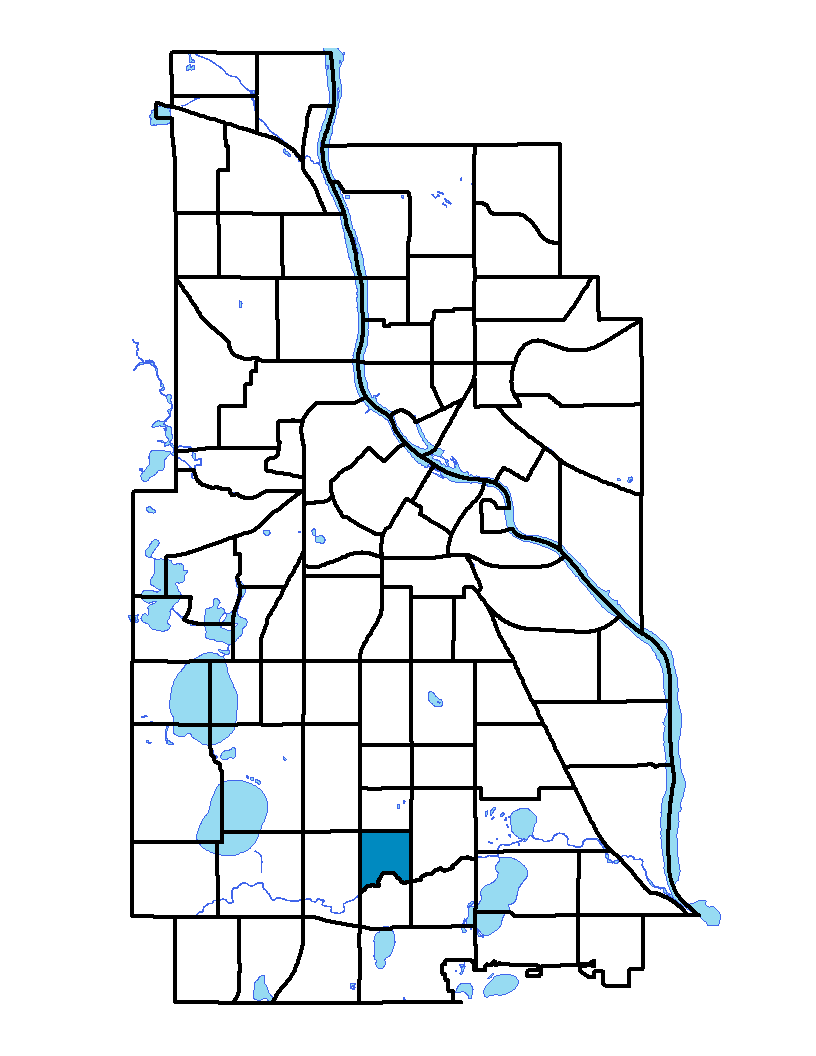"Compare Neighbordhoods" feature is not available in the archived version.
Field
Field neighborhood, located in south Minneapolis, is bordered by I-35W on the west side, Minnehaha Parkway on the south, Chicago Avenue on the east and 46 th Street East on the north. Field is named for the local school. The school is named for Eugene Field, a popular writer of children poetry. A largely residential neighborhood, it is characterized by small two-bedroom pre-1940s stucco, brick and stone houses. Chicago Avenue is the main commercial thoroughfare.
Field, Regina and Northrop neighborhoods share a neighborhood association; to learn more visit: www.frnng.org
Indicator Details
| Indicators |
Primary Domain |
Indicator Value | Rank | Tier |
|---|---|---|---|---|
| Business Retention | Economic Health | -1.6% | 70 | Bottom |
| Access to Mainstream Financial Services | Economic Health | 19.9% | 33 | Middle |
| Local Business Vitality | Economic Health | 65.6% | 14 | Top |
| Reading Proficiency | Educational Opportunities | -% | - | Data N/A |
| Adult Educational Attainment | Educational Opportunities | 92.7% | 35 | Middle |
| High School Graduation Rate | Educational Opportunities | -% | - | Data N/A |
| School Readiness Scores | Educational Opportunities | -% | - | Data N/A |
| Preschool Enrollment | Educational Opportunities | 63.3% | 23 | Top |
| Residential Proximity to Traffic | Environmental Hazards | 37.5% | 77 | Bottom |
| Proximity to Brownfield Sites | Environmental Hazards | 0.0% | 1 | Top |
| School Proximity to Traffic | Environmental Hazards | 0.0% | 1 | Top |
| Proximity to Superfund Sites | Environmental Hazards | 0.0% | 1 | Top |
| Toxic Releases from Facilities | Environmental Hazards | 0.0% | 1 | Top |
| Public Assisted Households | Employment Opportunities | 9.0% | 23 | Top |
| Employment Rate | Employment Opportunities | 73.8% | 19 | Top |
| Long-Term Unemployment | Employment Opportunities | 6.9% | 58 | Middle |
| Travel Time to Work | Employment Opportunities | 22.7 minutes | 51 | Middle |
| Vacancy Rates | Housing | 5.2% | 21 | Top |
| Age of Housing | Housing | 95.6% | 74 | Bottom |
| Blood Lead Levels in Children | Housing | 0.0% | 1 | Top |
| Excessive Housing Cost Burden | Housing | 20.9% | 15 | Top |
| Violent Crime | Health Systems and Public Safety | 28.7 | 13 | Top |
| Chronic School Absence | Health Systems and Public Safety | 28.4% | 6 | Top |
| Low Birth Weight | Health Systems and Public Safety | 2.8% | 7 | Top |
| Motor Vehicle Collisions | Health Systems and Public Safety | 1.7 | 15 | Top |
| Preventable Hospitalizations | Health Systems and Public Safety | 1.5 | 18 | Top |
| Tree Cover | Natural Areas | 30.3% | 23 | Top |
| Access to Parks and Open Space | Natural Areas | 4.6% | 49 | Middle |
| Walkability | Neighborhood Characteristics | 62 | 44 | Middle |
| Offsite Alcohol Outlets | Neighborhood Characteristics | - | - | Data N/A |
| Food Desert | Neighborhood Characteristics | -% | - | Data N/A |
| Residential Mobility | Social Cohesion | 90.5% | 5 | Top |
| Voter Participation | Social Cohesion | 34.1% | 26 | Top |
| Transit Accessibility | Transportation | 341.5 | 39 | Middle |
| Commute Mode Share | Transportation | 21.7% | 61 | Bottom |
| Household Transportation Costs | Transportation | 18.9% | 70 | Bottom |
| Pedestrian Connectivity | Transportation | 124.4 | 45 | Middle |

